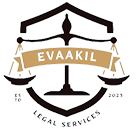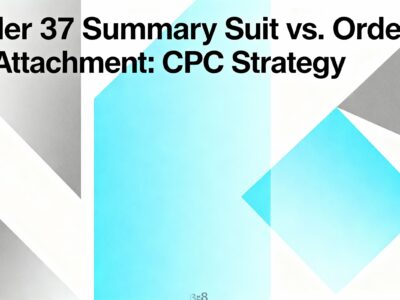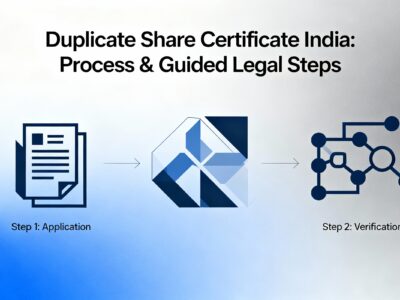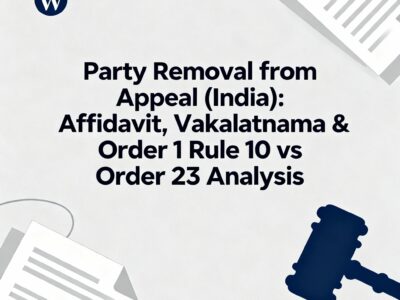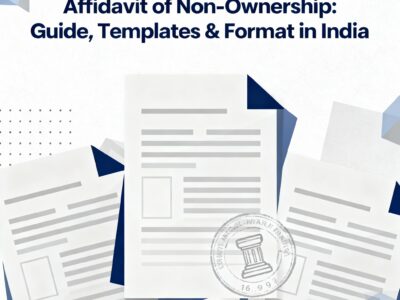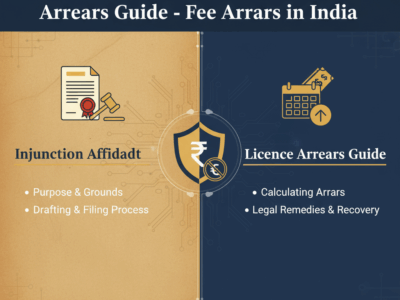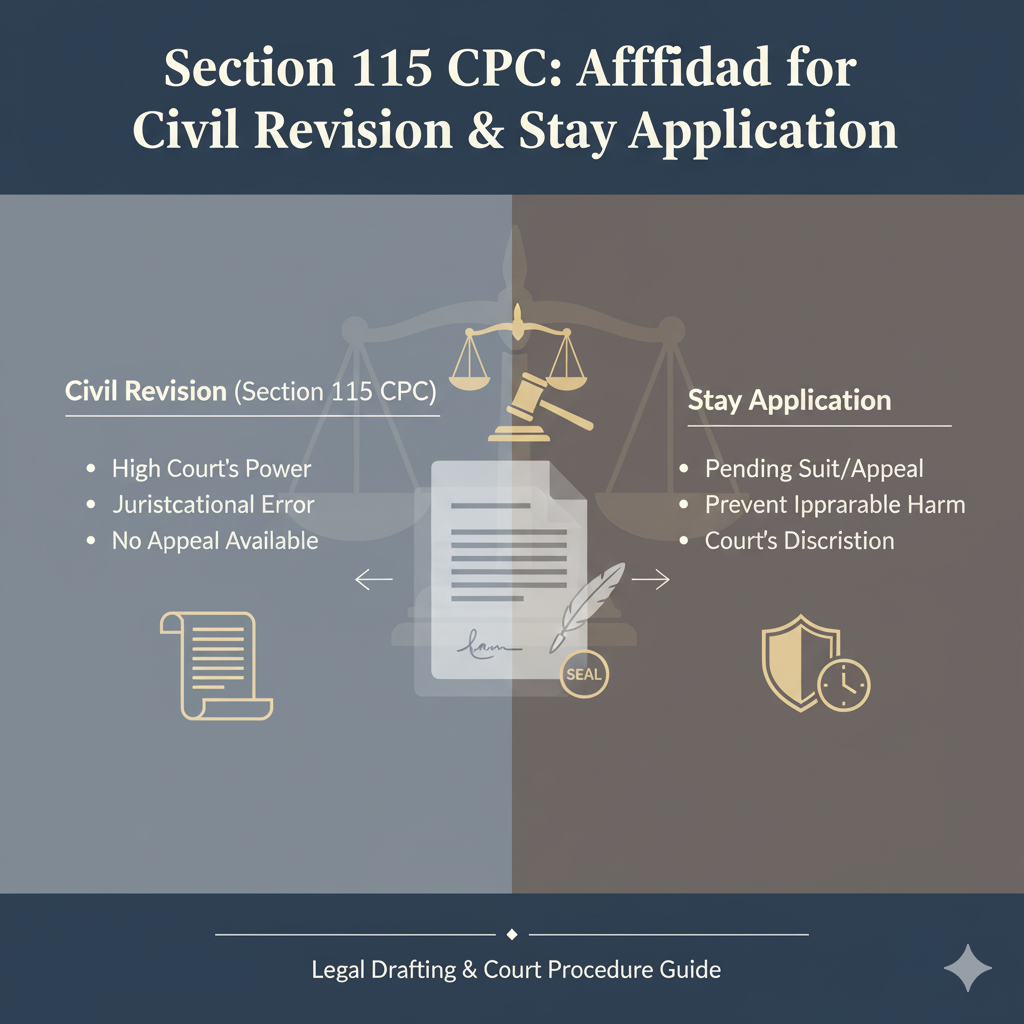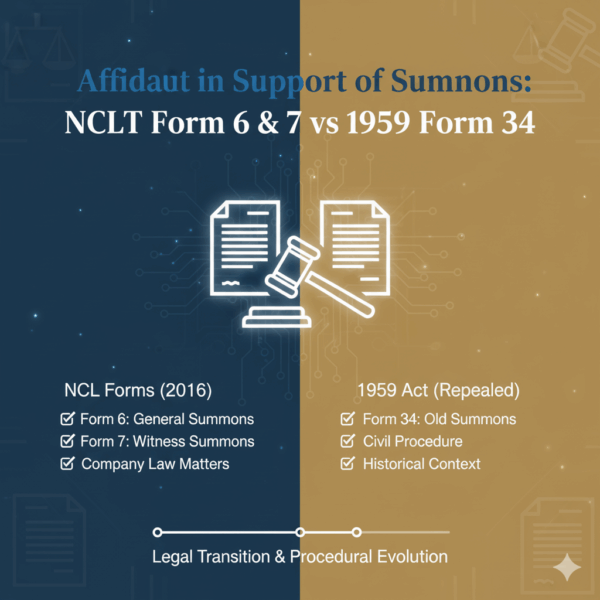In a civil lawsuit, “document production” (or “discovery of documents“) is the formal process where each party must disclose all relevant documents in its possession to the other party. This process is fundamental to a fair trial. It prevents surprises, allows each side to understand the strength of the other’s case, and helps identify the real issues in dispute.
The Code of Civil Procedure, 1908 (CPC) provides the general rules, primarily in Order XI. However, High Courts with Original Jurisdiction, like the Calcutta High Court, have their own specific rules (the “Original Side Rules”) that modify and supplement the CPC.
Document Production under the CPC and Calcutta High Court Rules
A Practical Guide to Order XI and Calcutta's Original Side Procedures
What is Document Production?
In a civil lawsuit, "document production" (or "discovery of documents") is the formal process where each party must disclose all relevant documents in its possession to the other party. This process is fundamental to a fair trial. It prevents surprises, allows each side to understand the strength of the other's case, and helps identify the real issues in dispute.
The Code of Civil Procedure, 1908 (CPC) provides the general rules, primarily in Order XI. However, High Courts with Original Jurisdiction, like the Calcutta High Court, have their own specific rules (the "Original Side Rules") that modify and supplement the CPC.
The CPC Framework: Order XI
Order XI of the CPC is the primary source for discovery, inspection, and production of documents. While parties must file their most important documents with their pleadings (Order VII, Rule 14 for plaintiffs; Order VIII, Rule 1A for defendants), Order XI governs the process of compelling the other side to disclose *all* relevant documents.
| Provision | What It Governs | Key Takeaway |
|---|---|---|
| Order XI, Rule 12 | Application for Discovery | A party can apply to the court for an order directing the other party to disclose all documents relating to the case. |
| Order XI, Rule 13 | Affidavit of Documents | The party ordered to make discovery must file a sworn affidavit listing all relevant documents (Form No. 5). |
| Order XI, Rule 14 | Production of Documents | The court can order a party to produce specific documents from their affidavit for the court's inspection or for the other party. |
| Order XI, Rule 15 | Inspection of Documents | A party is entitled to inspect and take copies of any document referred to in the other party's pleadings or affidavits. |
| Order XI, Rule 21 | Consequences of Non-Compliance | Failure to comply with a discovery order can lead to the suit being dismissed (if plaintiff) or the defence being struck out (if defendant). |
Interactive Guide: Stages of Document Disclosure
Document production is not a single event. It happens at different stages of a suit. Click the tabs below to understand what is required at each stage.
Stage 1: Filing with Pleadings (O.VII R.14 & O.VIII R.1A)
This is the first and most basic level of disclosure.
- Plaintiff (Order VII, Rule 14): Must file all documents upon which their claim is based, along with the plaint.
- Defendant (Order VIII, Rule 1A): Must file all documents upon which their defence is based, along with the written statement.
- What if you miss one? You generally cannot rely on a document at the trial (hearing) without the court's permission if you failed to file it at this stage.
Stage 2: The Discovery Application (O.XI R.12)
This stage begins after pleadings are complete. You believe the other side has more relevant documents they have not disclosed.
- You file an application (a "Summons for Directions" in Calcutta O.S.) asking the court to order the other party to disclose all documents in their possession.
- The court will grant this order if it is satisfied the documents are "necessary" for disposing of the suit fairly.
- The other party must then file a sworn "Affidavit of Documents" in response.
Stage 3: Inspection (O.XI R.15)
This is the process of actually *seeing* the documents disclosed by the other side.
- You have an automatic right to inspect any document mentioned in the other side's *pleadings* (plaint, written statement).
- For documents listed in the *Affidavit of Documents*, you must send a formal notice to inspect them.
- The other party must then provide a time and place (usually their lawyer's office) for inspection within a set number of days.
Infographic: The Affidavit of Documents (Order XI, Rule 13)
The "Affidavit of Documents" is the most important part of the discovery process. It is a sworn statement listing *every single relevant document* you have, or ever had. It is typically divided into schedules.
Documents in Possession
All relevant documents you currently have. You must list them and offer them for inspection.
Privileged Documents
Documents you have, but which you object to showing (e.g., letters from your lawyer). You must list them but not show them.
Documents Once Possessed
Documents you used to have but no longer do. You must state what happened to them (e.g., "sent to X").
The Calcutta High Court (Original Side) Difference
The Calcutta High Court's Original Side Rules contain detailed procedures that supplement the CPC. For discovery (what the rules call "Discovery and Inspection"), Chapter X is key.
| Aspect | CPC (General) | Calcutta High Court (O.S.) Rules |
|---|---|---|
| Application | By application under O.XI R.12. | Typically made as part of the "Summons for Directions" (Chapter X, Rule 1). |
| Affidavit Form | Form No. 5, Appendix C, CPC. | Specific form provided (Form No. 7, Appendix B of O.S. Rules). |
| Time for Inspection | Notice to inspect within 10 days; inspection within 3 days after (O.XI R.17). | Notice to inspect, party must provide a time within 3 days; inspection must be within 3 days from that (Chapter X, Rule 10). |
| Disputes | Decided by the Judge. | Often heard and decided by the Master or a Judge in Chambers in the first instance. |
What Can You Withhold? (Claims of Privilege)
You cannot refuse to disclose a document just because it hurts your case. You can only withhold it if it is "privileged." Click to learn about common claims.
Legal Professional Privilege
This is the most common and important privilege. It protects confidential communications between a lawyer and their client made for the purpose of seeking or giving legal advice. It also protects documents created for the purpose of litigation (e.g., a report from an expert prepared for the lawsuit).
"Without Prejudice" Communications
This applies to communications (letters, emails) made between parties in a genuine attempt to settle the dispute. The law protects these so parties can negotiate freely without fear that their settlement offers will be used against them in court as an admission of weakness.
Public Interest Privilege (Crown Privilege)
This is a claim, usually made by the government, that disclosing a document would be harmful to the public interest (e.g., it relates to national security, policy-making, or police investigations). The court must balance the public interest in non-disclosure against the interest of justice in the case.
Module 6: E-Discovery in Modern Litigation
The term "document" is not limited to paper. It includes all forms of electronic records. The Information Technology Act, 2000, and the Evidence Act, 1872, make electronic records admissible as evidence.
This means your duty of discovery extends to:
- Emails: Both sent and received, including drafts.
- Chat Logs: Messages from platforms like WhatsApp, Signal, or Telegram.
- Databases: Entries in accounting software, CRM systems, or custom databases.
- Digital Files: Word documents, Excel spreadsheets, PDFs, and presentations.
- Computer Metadata: The data *about* the data, such as when a file was created, modified, or accessed.
Key Challenge: Preservation
The biggest challenge with e-discovery is "preservation." Electronic data can be easily deleted or modified. Once a lawsuit is "reasonably anticipated," parties have a duty to preserve all relevant electronic data. Deliberately deleting relevant emails or files after a dispute has started can lead to severe penalties from the court.
Module 7: What if Discovery is Incomplete?
What happens if the other party files an Affidavit of Documents that you believe is incomplete or false? You are not simply stuck with their answer.
1. "Further and Better" Affidavit
If the affidavit is vague (e.g., it lists "a bundle of letters from 2020" instead of identifying them), you can apply to the court for an order directing the party to file a "further and better" affidavit with more specific descriptions.
2. Application for Specific Documents
If you have a strong reason to believe a *specific document* exists and has not been disclosed (e.g., your own letters clearly refer to a reply from them), you can make a separate application for that specific document. The court can then order them to state on oath whether they have that document and, if not, what happened to it.
Module 8: Practical Tips and Common Mistakes
The discovery stage is technical and full of traps for the unwary.
Common Mistakes to AVOID
- Hiding Bad Documents: Never deliberately omit a document because it is unfavorable. If it is relevant, it *must* be disclosed. Hiding it is perjury and can cause your entire case to be dismissed.
- Vague Descriptions: Describing documents as "a file of correspondence" is not enough. This invites an application for a better affidavit, wasting time and money.
- Forgetting E-Discovery: Forgetting to search for and disclose relevant emails or chat messages is a very common and serious error.
- Improper Privilege Claims: Simply marking a document "confidential" does not make it privileged. The privilege must have a valid legal basis (e.g., legal advice).
Best Practices to FOLLOW
- Start Early: Begin collecting and organizing your documents as soon as you consider litigation. Ask your client for *all* files, emails, and messages.
- Be Organized: List documents in your affidavit in a clear, chronological, and numbered manner. This makes inspection much smoother.
- Consult Your Lawyer: Before you sign the affidavit, review every single document and the privilege claims with your lawyer. The affidavit is a sworn statement, and you are personally responsible for its accuracy.
- Maintain a "Document Hold": Instruct all relevant persons in your company (if applicable) not to delete any data related to the dispute.
Summary: Key Points for Litigants
Managing document production correctly is essential for success in any civil suit.
- Disclose Early: File all supporting documents with your plaint or written statement.
- Be Thorough: Your Affidavit of Documents must be complete. Forgetting a document can be disastrous.
- Understand Privilege: Know what you can and cannot withhold. Making a wrong privilege claim can be penalized by the court.
- Know Local Rules: If your case is in the Calcutta High Court's Original Side, be aware of its specific forms and timelines. The O.S. Rules, not just the CPC, govern your procedure.
